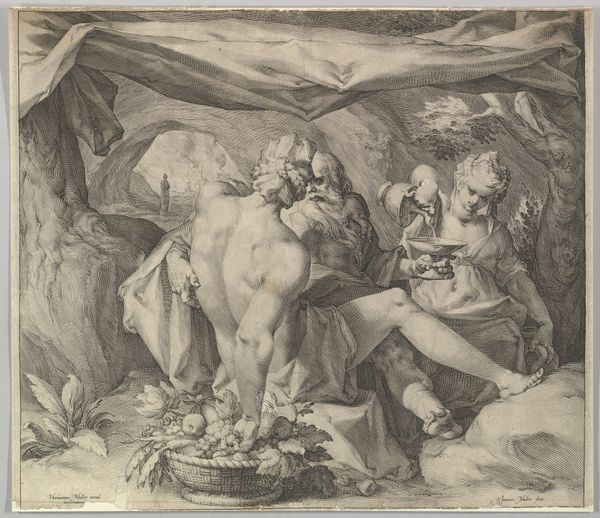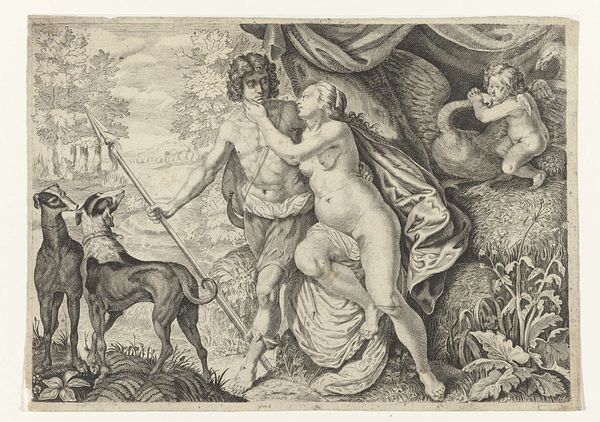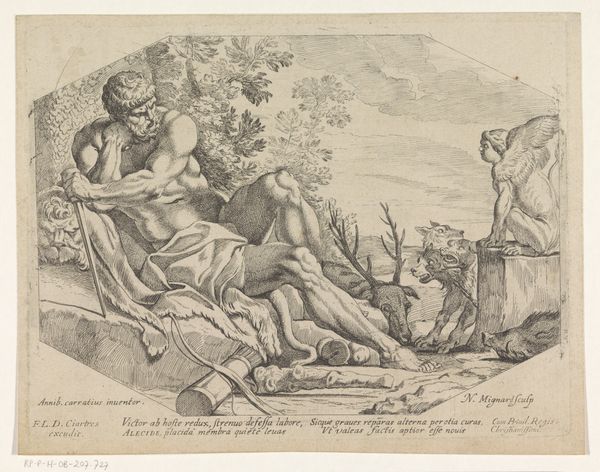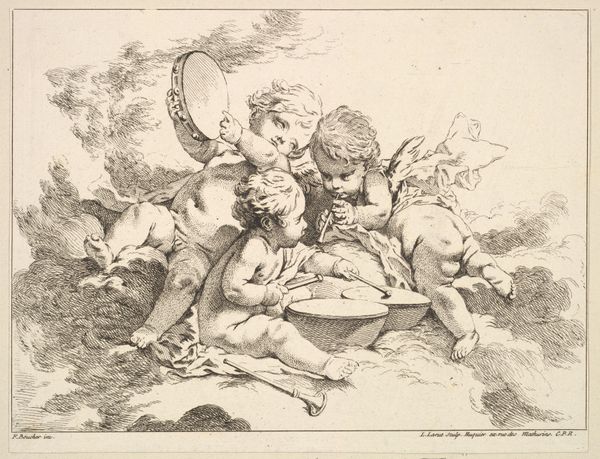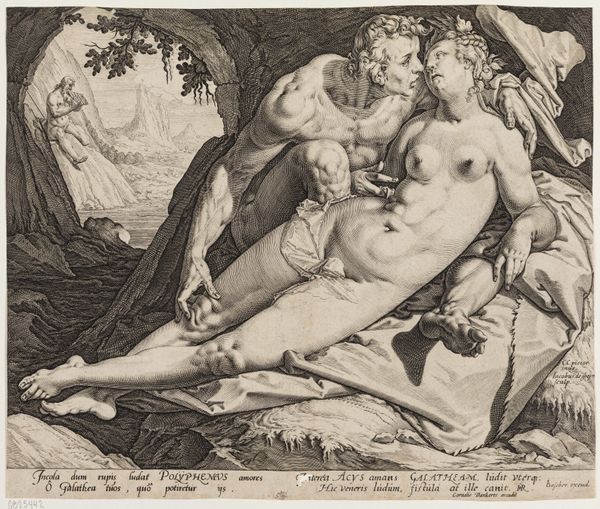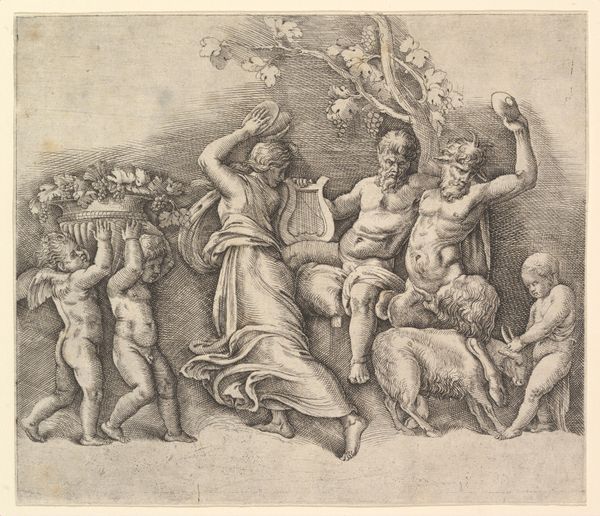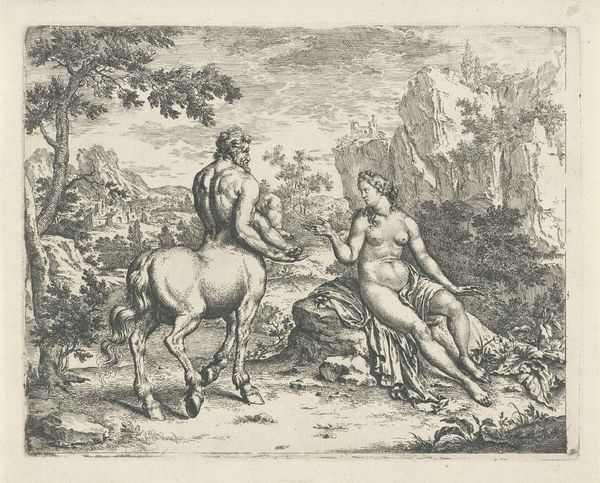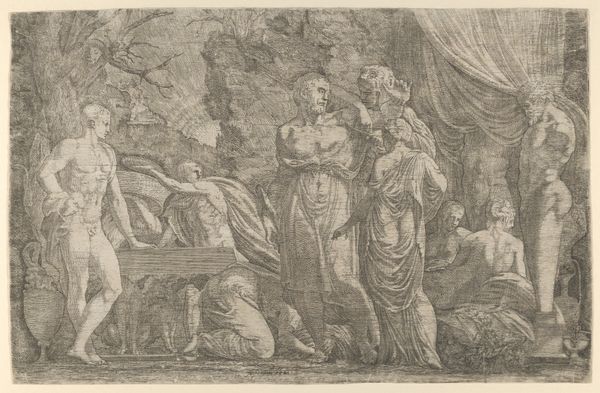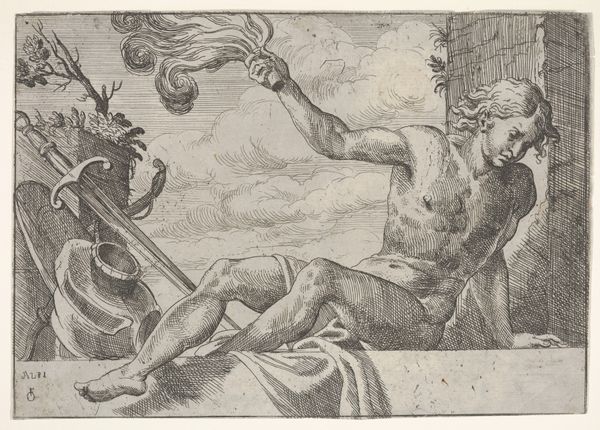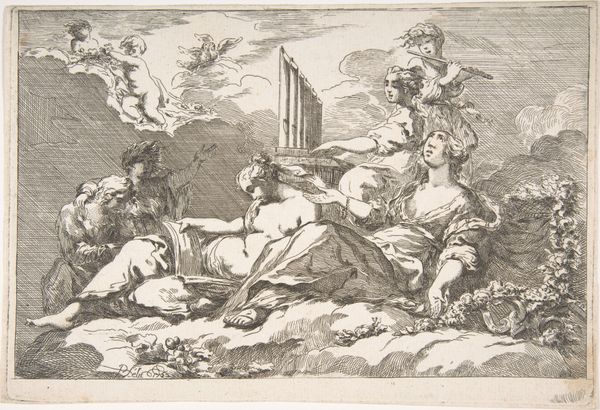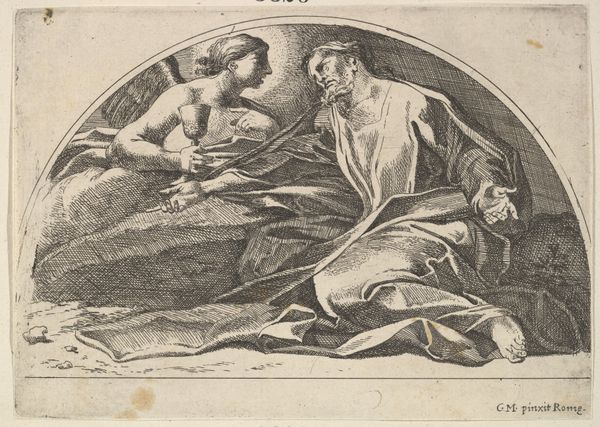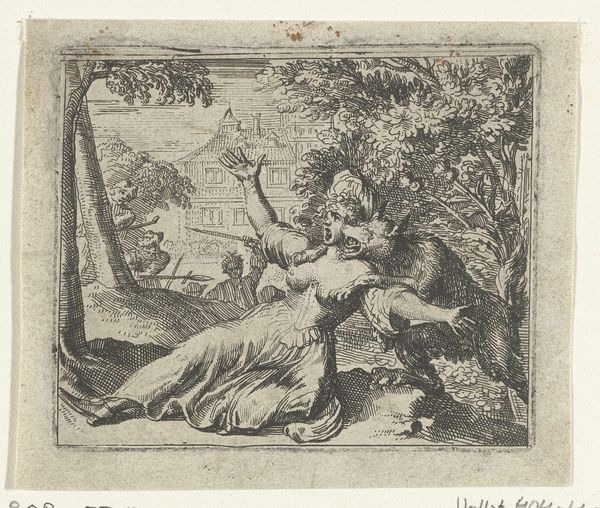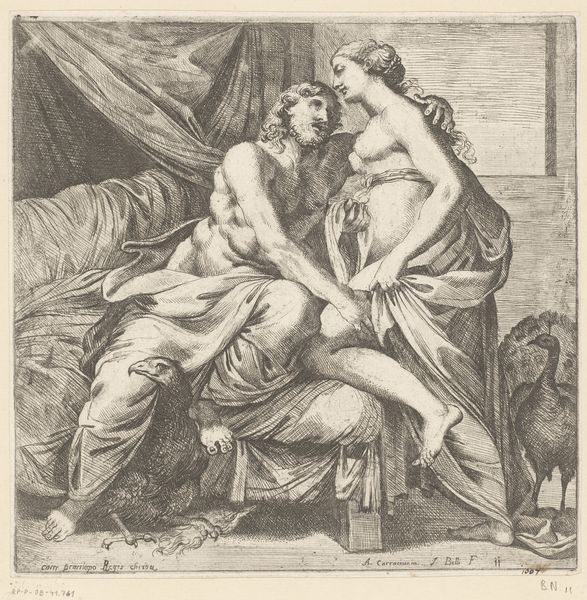
drawing, print, engraving
#
drawing
# print
#
landscape
#
11_renaissance
#
italian-renaissance
#
nude
#
engraving
Dimensions: Sheet (trimmed): 6 3/8 × 11 5/8 in. (16.2 × 29.5 cm)
Copyright: Public Domain
Curator: Welcome. Here we have Léon Davent's engraving, "Diana Resting," likely made between 1537 and 1550. It’s currently held in the collection of the Metropolitan Museum of Art. Editor: It’s interesting. At first glance, the figure seems almost too casual, reclining among her hounds and deer. It gives off a very relaxed vibe. Curator: I'm intrigued by how this piece reflects Renaissance printmaking techniques. The texture created by the engraved lines – note the variations in density to create light and shadow. This kind of intense detailing reflects the labor-intensive processes and skill needed for print production during that era. Editor: Absolutely. I am really taken with the lunar symbolism; notice the crescent moon adorns her head, the emblem of Diana, goddess of the hunt and moon. The presence of the hunting dog and the deer further amplifies this imagery. It feels archetypal, linking back to very old concepts about femininity, the wild, and cycles of nature. Curator: I think what fascinates me is how Davent blends mythology with elements from the natural world. The medium of printmaking allows the dissemination of classical motifs into domestic spaces and it reflects how even at that time mythological elements and how women were represented permeated the sphere of everyday objects and consumer goods. Editor: And that domestic sphere would, in turn, reinforce and perpetuate certain understandings of womanhood, linking it tightly with notions of both serenity and wildness, the hunt and motherhood. The seeming contradictions are definitely striking! Curator: So true. Printmaking in the Renaissance allowed classical iconography to be reproduced and distributed across Europe, facilitating new consumer markets and material engagements with classical themes and aesthetics. Editor: It’s really quite potent. Understanding how imagery connects us to shared cultural narratives really is central to interpreting visual culture through art like this. Curator: Ultimately, by investigating Davent's creative practice within the socio-economic context of his era, we appreciate how much an engraving says about artistic practice and broader economies of image distribution in 16th century Europe. Editor: And for me, tracing the pathways of ancient symbols really reveals just how timeless certain themes are. The layered symbolism here adds new depth to this Diana.
Comments
No comments
Be the first to comment and join the conversation on the ultimate creative platform.

